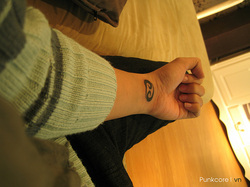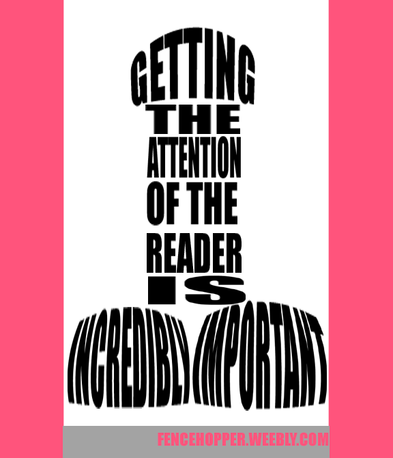I recently was to deal with an abandoned hoard of rabbits that were going to be killed, and I had to research how to get them to homes. One option was a local no-kill rabbit-specific shelter. They were full, which is understandable. I asked them how long it takes them to adopt out rabbits. The representative estimated that they adopt out one pair of rabbits every few months. Contrast this with the pet stand in a nearby swapmeet that gets an estimated 25 rabbits to homes every couple of weeks. The shelter is definitely a better place to get a pet, for a multitude of reasons, not the least of which involves the importance of rescuing an animal from euthanasia. In fact, we support banning pet stores that sell commercially-bred pets in malls. Pet stores, including this pet stand at the swap meet, get their animals from breeders and pet mills. For animal enthusiasts, it can be frustrating to know that anyone would think of buying a pet from a breeder or store when there are so many that need to be saved. However, it turns out that sometimes consumers are incentivized to buy new animals. Let’s compare the Rabbit Resource Center with the pet stand: |
Rabbits from:
________________
Fee:
________________
Location:
________________
Requirements for adoption:
________________
Rabbits Are:
________________
How many rabbits gotten to homes each year (estimated):
________________
| Rabbit Resource Center
Abandoned Rabbits
$95
Strip-mall on side-street
-Must not be for a child or class room
-Must take at least two, or already have one at home
-Indoor housing
-Home visit
-No non-spayed or non-neutered rabbits at home
-You must commit to having the animal its entire life
-Must fill out 3-page application
-Follow-up home visit
-Adult
-Spayed/neutered
-Socialized
-Litter-box trained
10
| Pet Island Pet Stand
Breeders
$25
Heavily Trafficked indoor swap meet
-none
-Young
600 | Animal volunteers are caring people who want to make sure that the animals go to the best home available. Policies are in place to make sure that animals that are adopted out go to suitable guardians who will take good care of them throughout their lifetime. It is important to see where the animal is going, and make sure that the adopter knows what it means to adopt a pet. This makes sense, except when shelters and rescues go overboard. The pet overpopulation problem is a desperate scenario, so we should treat it with some desperation. When I adopted out the rabbits I had in my care, I put as much effort as I could into finding homes for them fast, and the only stipulation was that I would trust the new guardians. They were given to friends and friends-of-friends and, as I’ve followed up with them, I know they are all healthy and happy in their homes. What would have happened if I had given them to a rescue? An Examiner article details an account of someone in the market for a pit bull being denied by a rescue group. The potential pet-guardian found a perfect rescue pet, but the policy mandated that he keep the dog in a crate while he is not home. The rescue suspects that any dog left to wander the house while the guardian isn’t around will chew on property and then be returned to the facilities. The adopter insisted that he would not return the dog if that happened, and he refused to crate the dog while he was not home. When he was rejected, the dog went to the shelter, and the adopter instead purchased a dog from a breeder. Think of all the ways that the rescue could have handled the situation differently. They could have made an exception. They could not enforce that particular rule. They could let the adopter take the dog for a trial period to see how the animal acted at home. They could at least give the dog over for some time; even if he does return it, where’s the harm? Here are actual rules that some shelters and rescues enforce regarding adopters: - No adopters with children (minimum age varies)
- No adopters who work (so you must spend most of your time home with your pet)
- Adopters must have a gated yard
- Interview with your vet (no first-time pet guardians)
- No one wheelchair-bound (must be able to walk the dog yourself, you cannot delegate or hire someone)
- No other pets at home
Regardless of whether the animal you’re trying to adopt is at a kill-shelter or no-kill, you’re saving a life. Even the happiest, friendliest, cutest animals are killed every day at kill-shelters when they run out of room. Before the shelter kills an animal, though, they often call no-kill shelters. If there is any room there, the animal will be transferred. Every time an animal is taken from a no-kill shelter, it means that one from a kill shelter will be saved. The Rabbit Resource Center consistently gets calls from animal shelters asking if they have room to take in more red-listed (few days to live) animals, and they rarely do. If they could adopt out their animals in a more efficient manner then they wouldn’t have to pass up so many opportunities to rescue shelter rabbits. Here are some suggestions on how shelters and rescues could benefit by acting more like pet stores: - Invest in well-trafficked areas, such as shopping malls, so people can see the animals.
- Instead of tons of rules, talk to each adopter and assess whether the situation is right for the animal.
- Bring in rescued purebreds and charge money for them. Oftentimes, people think that the more expensive something is, the better it is. (That’s certainly not true with animals, but people still think that.)
- Put lower fees on animals that have been there a long time. Make sure that no animal costs more than he or she would at a breeder.
- Put low fees on animals, but charge for mandatory spay/neuter vouchers for those that are not fixed.
- Showcase a variety in front. There may be someone who has been looking for a tortoiseshell tabby for a long time and sees you have one.
- Hire business people: Advertisers to promote them, behavioral economists to improve sales, etc.
There are also many things that pet stores do that shelters should never emulate. I understand that one reason that shelter fees can be high is that they actually take care of their animals and don’t try to mass-produce them. That should remain standard. Pet stores are also often dishonest about where they got their animals, and the health and background of them. While a pet-store-like model could increase efficiency, shelters must always maintain their primary goal above (though not instead of) profit: to help animals. I want every dog, cat, rabbit and pet to find the best forever home in the world. But a system that makes it harder to rescue a pet than to support puppy and kitten mills is completely backwards. When so many are killed for want of a home, animal volunteers must remember that a good but imperfect home is better than the back room.
No one took it seriously when the man who calls himself Starblade posted online that someone wanted to kill him. But on May 14, 2012, his friend and former lover is expected to go to trial on the accusation of having murdered Starblade. Starblade's real name is Matthew Paul Finnigan and ever since he was a child, he had been put in programs where he didn’t belong. Matthew was autistic, and was put in special education programs with students with nonverbal learning disorders and juvenile delinquents. Matthew was often bullied by these other students, and learned their destructive habits. The issue tragically climaxed when Matthew died of a stab wound allegedly inflicted by a supposedly mentally disturbed student in one of his programs. The VictimMatthew’s mother, Patricia Finnigan, is not fond of the educational system that her son was put into. She told me about Matthew’s history. As kids on the autism spectrum sometimes tend to be, Matthew had problems being social and seemed to lack sufficient awareness of those around him. But he was also remarkable. In kindergarden, his mother recounted, he got frustrated in math class because it was too easy for him. While the class was still learning addition, Matthew had incredibly mastered multiplication. On-line, Matthew was known as “Starblade,” along with a host of other aliases accumulated as each one built up a bad reputation. He frequented the websites of a subculture called “furries,” or fans of anthropomorphic animals. The community consists of partiers, social outcasts, animal artists, roleplayers, costumers and others, but it is centered on animal characters. “Starblade” is Matthew’s character, a coconut-flavored dragoness. Unlike most furries, he was also an otherkin, or someone who believes he has a non-human soul. Matthew believed that he was literally a dragon on the inside. Matthew met with furries in real life as well, and had no more respected of a presence. A furry named Synn, whose character is a peacock-wolf, recounts a story illustrating his general mannerisms, taking place at a friend’s birthday party. Although Starblade was not invited, the event was temporarily posted in public on a bay area furry meetup group website. He came and, right in front of the birthday boy’s mother, drank some soda, spilled half on his beard and shirt, and then dropped the half-empty cup on the floor, stepped over it and walked away. His journal and forum posts were considered dramatic and sometimes threatening. He is even accused of stalking people. He is most infamous for the meme “Fuck you, I’m a dragon!” based on some debate forum responses which have since been deleted. He was so consistently over-reactive that when he insisted that people were stalking him, or when he threatened to kill himself, few of the readers took it seriously. He posted multiple times a former boyfriend had threatened to kill him. On August 24, 2010 he posted this to an on-line journal site at starblade-enkai.livejournal.com: Furry 3 [Referring to himself] receives death threats.Nobody listens. They offer no means to escape this furry's impending doom and likely no pity when the furry is eventually killed.Tell me again why furry is considered full of good, caring people?To his friends and family in real life, he also faced the many challenges. But friends and family write on memorial pages that he had a genuinely kind soul, felt remorse for those he wronged, and was just trying to do his best being dealt a challenging hand. “He just needed so much help in his life,” Patricia said. AutismChildren on the autism spectrum, depending on how high-functioning they are, can need special education. Some subjects they may excel at, but they might have problems understanding the subtleties of human emotions and interaction. There are programs designed to help these students learn in a group environment. Matthew was placed in several of these as a child. He attended a school called Marchus in Concord, California, for students with special needs. He was bored with the teachings as they only taught to the lowest California high school graduation standards. Since other students had disabilities ranging from physical disabilities to mental retardation and criminal violence, the situation, as described by his mother, was far from a warm, nurturing one. Instead he was preyed upon by bullies, exacerbating his social problems. Patricia knows this topic well. Her own mother was a special education teacher who taught autistic kids. When the school system started lumping the emotionally disturbed and children with nonverbal learning disorders with the autistic ones, the class was so disruptive that she couldn’t teach anymore. CollegeWhen he graduated high school, Matthew and his family found what they thought would be a great arrangement for college. They visited Monterey, California, and Matthew fell in love. He enjoyed the beach, and there was a community college, a California State University campus, and a private university, the first of which he ultimately enrolled in. Matthew’s parents were concerned, though, that he wouldn’t be able to adjust on his own to college. They were initially relieved to find a program called College Living Experience, which is designed to help students with learning disabilities and other challenges transition to life on their own. One semester, Matthew overloaded on classes,(Patricia couldn’t recall if it was 17 or 19 units) and the stress drove him to a bout with what was diagnosed as temporary schizophrenia. He was given treatment and meds supported by the state. However, Patricia recounted, once someone accepts clinical help from the state, they and their family lose certain rights to decide treatment. On February 25, 2010, he posted his feelings on Livejournal. I need some place to go, where people aren't deciding what's best for me. What's best for me is strangely enough what's worst for me. Prison is more desirable than when they can throw me into the retard pit. I just want out.
It was difficult to tell which of his actions were a result of the bout of schizophrenia, which were his autism, and which were just a result of being a bullied and sensitive teenager. It seemed that Matthew’s life was prone to throwing him curveballs. Still, he eventually got off of the schizophrenia meds and was considered cured. He even started expressing remorse for the drama he took part in online and posted that he wanted to make amends. College Living ExperienceCollege Living Experience seemed like a program that could lead Matthew in the direction he wanted to go while at Monterey Peninsula College. According to the website, the program “provides intensive assistance to students of with varying abilities. Some students have autism spectrum disorders, including Asperger’s Syndrome. Others have conditions such as dyslexia and ADD/ADHD or social and emotional maturation issues.” “CLE offered everything that they really needed for him to succeed, everything that kids on the autism spectrum don't really get naturally,” said Patricia. They do not list their costs on their website, but a fact-sheet of resources for students with learning disabilities lists the program costs as around $30,000 per 12-month period. The program is private and operates off-campus, and provides a variety of services, including a variety of academic and social mentors. This program is where Matthew met James Torrey Hill, who is said to be emotionally disturbed. Matthew may have seen himself as a dragon, but his mother saw him as a lamb: gentle and somewhat vulnerable. Patricia felt that putting Hill in the program was “like putting a wolf in with sheep.” The AccusedThe mugshot that appeared in newspapers in 2010 looked little like the suspect being detained in Monterey County Jail. James Torrey Hill's photo was in a newsbrief, and the same picture was on an identification bracelet he wore. In the picture he was heavy and pale, with short hair and a large hole in one of his earlobes, made by a thick-guage earring. Now he sat behind thick glass with a phone to his non-modified ear, with glasses, long hair, and minus 60 or so pounds. He’s called “Torrey” by most, “Magician” and “Big Bird” he claims by others, but when he first came into jail he wanted to be called “Phoenix.” “I’m like a Phoenix rising from the ashes,” he explained, smiling and gesticulating. “I’m on a path to becoming a better person.” Hill and Finnigan attended Monterey Peninsula College together, and although they had no classes together, they met at an CLE. According to news sources, the two had dated for a period of time, but were friends at the time of Finnigan’s death. According the the Monterey County Herald, Hill had a preoccupation with killing someone and made it his life’s goal. The Herald reported that Hill said he was “sick of school,” “sick of life” and “might as well go to jail.” I asked Hill if any of these claims were true. “One thing I have learned in here,” he said, “is that newspapers lie all the time. They’ll just make up whatever they want to sell newspapers.” The IncidentPeople involved in the case have been advised not to discuss matters with the media, so it was challenging to get information for this article. According to the Monterey County Herald, Hill has pled not guilty by reason of insanity, but what happened on the night of Matthew Paul Finnigan’s death will not be legally decided until the jury trial, which is scheduled to take place by the time this is published, on May 14, 2012. [UPDATE 8/1/12: The case has not gone to jury trial. A doctor report is scheduled for 9/19/12.]Virginia Hennessey of The Monterey County Herald, as well as other news sources, reported updates from a hearing: Matthew went over to Hill’s apartment and played some video games. Hill testified that he had gone into the kitchen and got a knife, which Hill hid up his sleeve. Officer Jeff Gibson responded to a 911 call in which the voices of both Hill and Matthew were heard, reporting a stabbing. Matthew had asked Hill to call the police, but Hill testified that he refused because he wanted to see Matthew suffer. Gibson testified that Hill came to the door with blood on his shorts, and that a bloody knife was found in a kitchen trash can. Matthew was found bleeding from a stab wound and was flown by helicopter to a hospital in San Jose. He bled for two hours before dying. During a recess in the hearing, the mothers of both Hill and Matthew went into the bathroom and sobbed. ResponseSynn remembers that she was at a weekly furry get-together when she first heard about Stablade’s death. She recounted this story on Facebook chat. here's something funny (maybe) but sad. Most of us were at chicken when we heard starblade was dead. We had seriously been telling funny awkward starblade stories the week before. Some fur, I can't remember who, comes up to a group I'm with and says "starblade is dead!" We all laugh and someone said "if only!" Then the first person assured us it was true and he had seen it on the news. We were silent for a few seconds then all burst into laughter. He became the butt of a ton of jokes, there was no "too soon" period for him. When Matthew's prediction of homicide came true, the responses were mixed. Many posts on his pages are private, have been deleted or the writers banned from the websites on which they wrote. On October 6, 2010, an anonymous user wrote on Starblade’s livejournal: Even I, who hated you with the best of them, fucking cried.
You were always genuine and unfiltered. You always said what you felt. But for once, Starblade, you were disturbingly prescient.
Nobody should have to die this way. Nobody should ever have to be jealous of Furry #2, and nobody should feel fated to be number #3. Starblade was going to die, he knew he was utterly doomed, and here he was writing an obituary for himself.
Nobody gave a shit.
I'm really sorry.
After that, another anonymous comment: I'm also sorry that the only place that you found solace and a sense of belonging, a place where people understood and shared your interests, in [sic] couldn't wait to be rid of you.Some posted that they were genuinely glad about Matthew’s death. Others didn’t post anything publicly, but still hated him very much. Others were upset at the death of any member of the fandom, and still others said they won’t miss him, but he didn’t deserve this. His family and friends held a funeral service in Danville, California, near his family’s home. In lieu of flowers, they asked for a donation to the Matthew Paul Finnigan Scholarship Fund. I tried to send a letter to the donation address, but it didn’t go through. I asked Patricia where that fund was going. “Well, we were going to use the money to help another student get into CLE,” she said. “But now there’s no way in hell we’re going to do that!” The EndMatthew’s family hopes for some small justice, in that more care will be taken to improve the standards for how people on the autism spectrum will be treated in education. The furries have gone on their way; they continue to attend conventions and draw characters. The dragon is dead, but there’s no hero to this story. And there’s no more time for Starblade to make amends or find peace or acceptance.
Whether you're a journalist, an artist, a marketer an advertiser, or...anyone, you've gotta get people's attention. See chapter 4 for marketing ethics.
 Last week, Patricia Snope had a decent life as a secretary. She's a mother of two and plays the lottery. She was a curious woman, exploring new things. She was gentle, caring, nurturing and contemplative, because these were the characteristics of her star sign, Cancer.
However, this week the zodiac signs changed, and Patricia became a Gemini. This change shifted the world beneath her. Her employer noticed the change and promptly fired her due to Patricia's new personality. Just because a scientist, who has no training in astrology, has changed the zodiac calendar.
"It feels like my world is spinning," explained Patricia. "If I can't count on horoscopes, how do I know who I am? How do I know what lottery numbers to choose? And now I've lost my job, what will I do?"
Patricia tried to file a complaint with human resources, but they said that they could do nothing. There are laws against discrimination because of your race, gender, religion and sexuality, but it's still legal and socially acceptable to judge people based on their star sign, so Patricia does not have a case. When asked about the incident, Patricia's boss, 43-year-old Bryson Hubbard didn't hesitate to explain his actions. "I can't have her Gemini type around here," he said. "They're too chatty; she might divulge company secrets. I never did trust them Geminiggers." People throughout the world are having to change their zodiac signs, from Scorpio to Libra, Virgo to Leo, Taurus to Aries, Pisces to Aquarius, and Saggitarius to Ophiuchus, which is the new one, and it appears to be in the shape of a guy fighting with a giant snake. Many December births have expressed concerns about becoming chronic masturbaters. Some refuse to believe that the calendar changed at all. Reports from newsfeeds indicate that this technique is working. Dr. Gunter Ladder from Metastudies University suggests denial. "I fear that, if you believe this scientist that your astrological sign has changed, many people will immediately become incompatible with their spouses," explained Dr. Ladder. "It'll be a cold day in hell when I admit that my wife has become one of those raving Saggitards."
To me a library symbolizes an environment of sharing, of passive anti-corporatism, where no one needs to even bring out their wallet before entering and using their services. However, a library still needs a lot of money, and the Los Angeles Public Library (of which there are 8 regional branches and a whopping 64 community branches) needs $117 Million, according to the Library's website ( lapl.org.) This is actually a $5.9 million cut from last year's budget. Since the California budget cuts, California's services are hurting, and the libraries are having no small amount of trouble as well. This budget cut means many branches will be closed both Sunday and Monday, and less books and programs will be available to the public. This is no good thing, but what budget cut is? If you were Mayor Villaraigosa, you would surely face opposition no matter what programs you decided to cut. This may sound biased as a voice behind a blog, but I think that libraries, while very nice and useful, offer services that are a bit outdated. Services that we could live without for a few days a week. For example, LA Weekly interviewed a student who appreciated getting a book from the library called Under the Rainbow: Growing up Gay. Great. Weekly quoted him saying, "The thing about libraries was that it was a place to get information for free." Hm, info for free? You don't say. I can tell you another place to get that service, and you're looking at it. Of course libraries offer more than that. This article from the Jewish Journal of Greater Los Angeles suggests that we cut money from a Gang Reduction and Youth Development program, as that program costs $5,245 per youth and the library, which serves many more young people, only costs $6.40 per youth. It cites the library as a safe place for students to go, and then inherently a hindrance to gang relations.
Other services are being hit even harder. According to this Daily News article by Rick Orlov, hundreds of people are being laid off, daytime child care programs are being canceled at parks and Kid's programs are being scaled back.
While I'm personally for social programs (well, now that I don't pay income tax), I think a small cut to the Public Libary's budget isn't going to kill anyone, so long as they are generally there. There are still thousands of places you can visit in LA on a Sunday, for which the city pays, like the nearest park or some community centers.
As a college student, I am often faced with many wonderful opportunities and choices. There are so many organizations that whoever has the right stuff can join, internships you can apply for, and scholarships you can get. Sometimes I feel that there are so many opportunities for us students, the hardest thing is deciding which ones to try.
Of course, that's not to say that there aren't stipulations for getting these opportunities. In order to ensure that you are an ideal candidate, you can attend seminars about success, read self-help books, and try to gain experience to make you a well-rounded and healthy person.
Though we're all far from perfect, personally I try to gain a lot of substance. I've gone to the career center to learn to exploit my strengths, and I've got communication skills coupled with an ability to keep a positive atmosphere when things are tough. I know how to give an interview, with enthusiasm and professionalism. The two most important characteristics an applicant can have to an employer are honesty and leadership skills, and I both value honesty and have experience with leadership classes. Not bad for a sophomore?
However there is one vital element that I lack, an element that cannot be taught in a seminar or learned in a book. This element has barred me from probably a good three-quarters of the scholarships and internships for which I have wished to apply. No, what I (along with so many others) am lacking is much more important than a positive attitude.
What I am talking about of course is the elusive dark skin.
How could I have missed that? I guess I am just not talented enough to apply for the American Academy of Science's Minority Science Writing Internship, nor can I get the Flip Wilson Journalism Scholarship. Sure I'm a journalism major with a passion for science and an ability to write a biography for Flip Wilson, but I just don't have enough of that golden melanin to be deserving.
So I encourage you pasty-faced losers, don't let this happen to you. Don't get so caught up in things like education and experience, because a true test of character is reflected in your complexion. Sure, you might get skin cancer before you're tan enough to be considered a minority, but it's worth the risk. Besides, us white people should be ashamed of the way we were born, anyway.
Here are some heroes of ours who did some terrible stuff in their lifetime. Sure, there hearts might have been in the right place--it's pretty hard to live with your heart anywhere but in your chest--but it's interesting to know that these supposedly amazing people had some seriously devastating slip-ups due to their ignorance.
1. Mother Theresa
Here's one person that is so well known as a good person that her name is used synonymously as someone who sacrifices a lot to be kind. But, as a devout Catholic, she went around telling people not to use condoms and thus nearly created the momentum of the AIDS epidemic.
2. Ghandi
When Ghandi's first wife got sick, Ghandi had faith in God's power to heal. His dying wife begged for medication, but he refused to let her have it, saying that God would save her. As you may have guessed, she suffered through her illness and soon died. Later Ghandi got sick, and did not trust God would save him, and took the medicine.
3. Oprah
Oprah has done quite a bit in the means of donating to nonprofits and raising awareness. However, as the new owner of Discovery Health, she doesn't appear to know anything about medicine. She promotes "alternative medicine," such as homeopathy, which is literally nothing but water, as opposed to traditional western medicine. Multiple people, including children, have died from completely preventable illnesses, who decided (or whose parents decided) to skip real medicine and go with whatever quackery Oprah is pushing.
In some senses, you could argue that these individuals are, consequentially, murderers. You could argue that they were just not critical thinkers and unintentionally abusive of their powers. Either way, hero worship is dangerous if the worshipper can't tell that everyone makes mistakes. Also, these people illustrate the dangers of ignorance, and the idea that we should reject ideas that reject reality, no matter how much we want to believe them.
|





 RSS Feed
RSS Feed